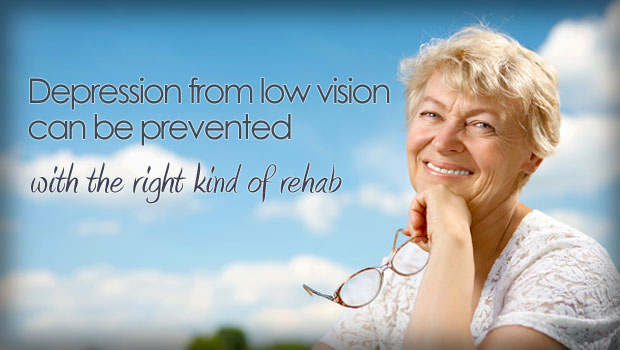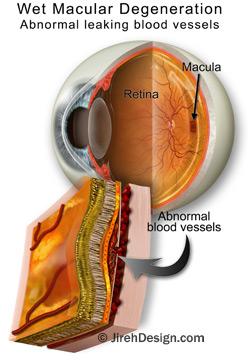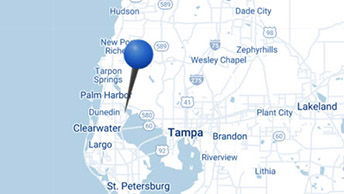Low vision rehabilitation helps prevent depression from vision loss
A study shows that behavior activation therapy used with low vision therapy can reduce depression incidence by 50 percent Depression […]


Low vision rehabilitation helps prevent depression from vision loss
A study shows that behavior activation therapy used with low vision therapy can reduce depression incidence by 50 percent Depression […]
A study shows that behavior activation therapy used with low vision therapy can reduce depression incidence by 50 percent
Depression is a common side effect in people who have vision loss from age-related eye diseases, like macular degeneration. Studies have discovered that one third of people with advanced age-related macular degeneration (AMD) in both eyes develop clinical depression. Low vision, as defined by National Eye Institute, is a visual impairment not correctable by standard glasses or contact lenses, medicines or surgery, and interferes with a person’s ability to perform everyday tasks.
CLICK HERE to watch the “Human Eye” animation
Because of low vision, routine lifestyle activities that were once enjoyable can become difficult or even impossible. Daily activities like reading and watching television can become awkward or unmanageable. Driving gives people their independence, when this is stripped away by vision loss, life can change 180 degrees for some, especially those who live alone.

The culmination of low vision life changes, coupled with the reality of dealing with low vision, can take a toll on the mental health of AMD patients and lead to depression. Depression is associated with increased disability, higher medical costs and mortality.
Researchers in the Low Vision Depression Prevention Trial studied the efficacy of structuring treatments for these patients with a multidisciplinary approach that integrates primary eye care, psychiatry, psychology, and rehabilitation.
Barry Rovner, M.D., a professor of psychiatry and neurology at the Sidney Kimmel Medical College at Thomas Jefferson University in Philadelphia led a team of medical professionals including ophthalmologists, psychologists, optometrists, and occupational therapists to test an approach called “behavior activation”, an emerging treatment for depression that promotes self-sufficiency and social connections to improve mood and counter mental and emotional withdrawal.
The trial involved 188 patients with AMD with an average age of 84. Each participant had mild depressive symptoms and was at risk for developing clinical depression based on pre-trial tests. The first approach to these study patients was to prescribe low vision devices. The next step was to split the patients into two groups. The first group would receive behavior activation therapy; the second would be a control group.
The behavior activation therapy group
This first group would receive counseling to guide them with:
- The proper use of their low vision devices.
- Making changes around their environments, like brighter lights, high-contrast tape, tactical hints around the house.
- Increasing social activities.
- Set personal goals that are broken down into small achievable steps.
The control group
This group was counseled by a therapist and did not receive any behavior activation or low vision occupational therapy, like the first group. They received more of a supportive therapy, rather than the self-sufficient therapy that behavior activation provides. This approach is not unlike the current standard low vision management.
Both groups were provided six, one-hour therapy sessions over a period of two months. Although none of them were restricted from taking antidepressant medications, only 10 percent of them did. All of the patients in both groups received as-needed AMD management with their primary ophthalmologists.
Results
At the end of the four-month study, the researchers assessed eight variables, including depression, vision, vision-related quality of life, physical health and device usage. They found that there was a 50% lower risk of depression in the first group who received the behavior activation therapy compared to the control group who received only supportive counseling. The depression risk was shown to reduce even more in patients with the most vision loss.
The results suggest that the traditional routine of ophthalmologists referring vision loss patients for solely low vision rehabilitation is not enough. The thirty percent chance that the low vision AMD patient will be afflicted by depressive disease dictates that there needs to be broader thinking and a multi-disciplined approach to following patients with low vision.
Occupational therapy is currently reimbursed by Medicare when approved by a physician. It is the hope of the researchers that behavior activation therapy will become a mainstream adjunct treatment in the management of age-related macular degeneration.
We will continue to closely follow low vision research here at www.MaculaCenter.com and post new articles frequently.






